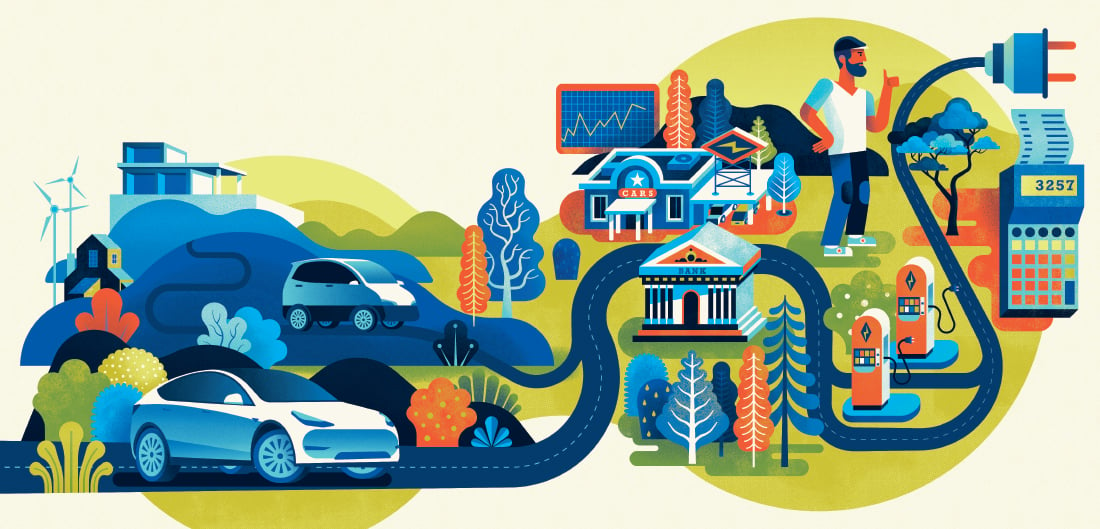In the not-so-distant past, electric cars commanded little public interest—and even less road space. Currently, there are about 2 million electric vehicles, or EVs, on America’s roads.* And while that figure represents less than 1% of the nation's cars in operation, this share is growing. Fast. But what’s behind the rise of EVs? See for yourself.
Battery Electric Vehicles (BEVs)
Known as “all-electric vehicles,” BEVs run only on electricity and are recharged using external power sources. Their electric motors are powered by chemical energy in rechargeable battery packs.
Plug-in Hybrid Electric Vehicles (PHEVS)
Like BEVs, PHEVs also have batteries that power an electric motor and can recharge via an external power source. However, they also have small internal combustion engines capable of recharging the battery or, in some cases, providing power to the wheels.
Sales
U.S. consumers purchased 800,000 EVs in 2022. EV sales accounted for 5.8% of all car sales, up from 3.2% in 2021, according to Kelley Blue Book.
Interest
Forty-two percent of Americans said they would likely consider going electric for their next vehicle purchase, while a slightly larger share, 45%, said they’re not likely to do so, an August Pew Research poll found.
Taxes
A federal tax incentive encourages EV purchases by offering up to $7,500 in the form of a nonrefundable credit.*
Environment
While most EVs produce no tailpipe emissions, the electricity needed to charge them is still powered by fossil fuels in most of the world. But an EV’s operating efficiency ultimately offsets any higher environmental costs over time, experts say.
Insurance
If you’re wondering how your new EV might affect your insurance bill, you can always ask your local agent to run a quote for you before you buy.
*Consult a tax professional
